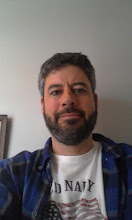Nicolás is now learning about the Renaissance at school. He is being taught the importance of humanism, the return to classical antiquity, ingenuity and observation of your surroundigs, all values that had little to do with the Middle Ages and its mindset. And who better than Leonardo da Vinci to illustrate this new and daring spirit. So, we watched —and commented— BBC's documentary on Leonardo, in three different parts. Here is the link to the first part of episode 1. You will find the rest on YouTube.
What did I learn?
(Nicolás)
I'd say that Leonardo da Vinci was a very knowledgeable person and probably the most intelligent person known to humanity. His work involved science, art and technology and, on the other hand, every scientist we know (besides Leonardo) only studied and worked on one thing that they where good at and they never really studied anything else. Leonardo was a great artist, a great mechanical engineer, a great anatomist and a great philosopher. His real name is actually Leonardo di Ser Piero da Vinci.
viernes, 26 de febrero de 2010
miércoles, 24 de febrero de 2010
Interpretando un mapa.
Mi esposa vio hace unos meses un mapa de gran tamaño en casa de una amiga, así que decidió comprarse uno en Ikea y colgarlo en casa en una de las paredes de la oficina para que los chavales puedan usarlo cuando les haga falta. Eso sí, les será de bien poca ayuda sin el conocimiento necesario sobre cómo interpretarlo. Esta tarde me reuní con ellos en la oficina, le echamos un vistazo y aprendimos los conceptos básicos para interpretar el mapa geográfico y político, así como los husos horarios y las coordenadas geográficas.




Etiquetas:
Conocimiento del Medio,
geografía
lunes, 22 de febrero de 2010
Introduction to computer networking.
My oldest son has been showing some interest for computers lately. So, today I decided to give him an introductory lesson to computer networking using our own home network. For starters, I explained how in the old days most people had desktop computers at home, and these weren't even connected to each other (not to talk of the Internet!). I then explained how, in order to be able to put together a network with a few nodes, you need a way to address each individual component of the network, and how several different schemes had been developed to accomplish this. In the end, though, the Internet became so popular that everyone adopted its mechanism: IP addresses and TCP/IP. At a later stage, the task was connecting those networks with each other, therefore creating the figure of the gateway. I told him about the concept of a subnet, as well as the gateway and broadcast addresses. I then proceeded to explain to him that all this could be configured via a static IP configuration or via DHCP. Finally, I taught him how to find out the IP address assigned to his own computer both on an Apple Mac and a Linux system, and also both using the graphical interface and the command line, before teaching him how to use the ping command.
Etiquetas:
computers,
networking,
Tecnología
Suscribirse a:
Comentarios (Atom)
